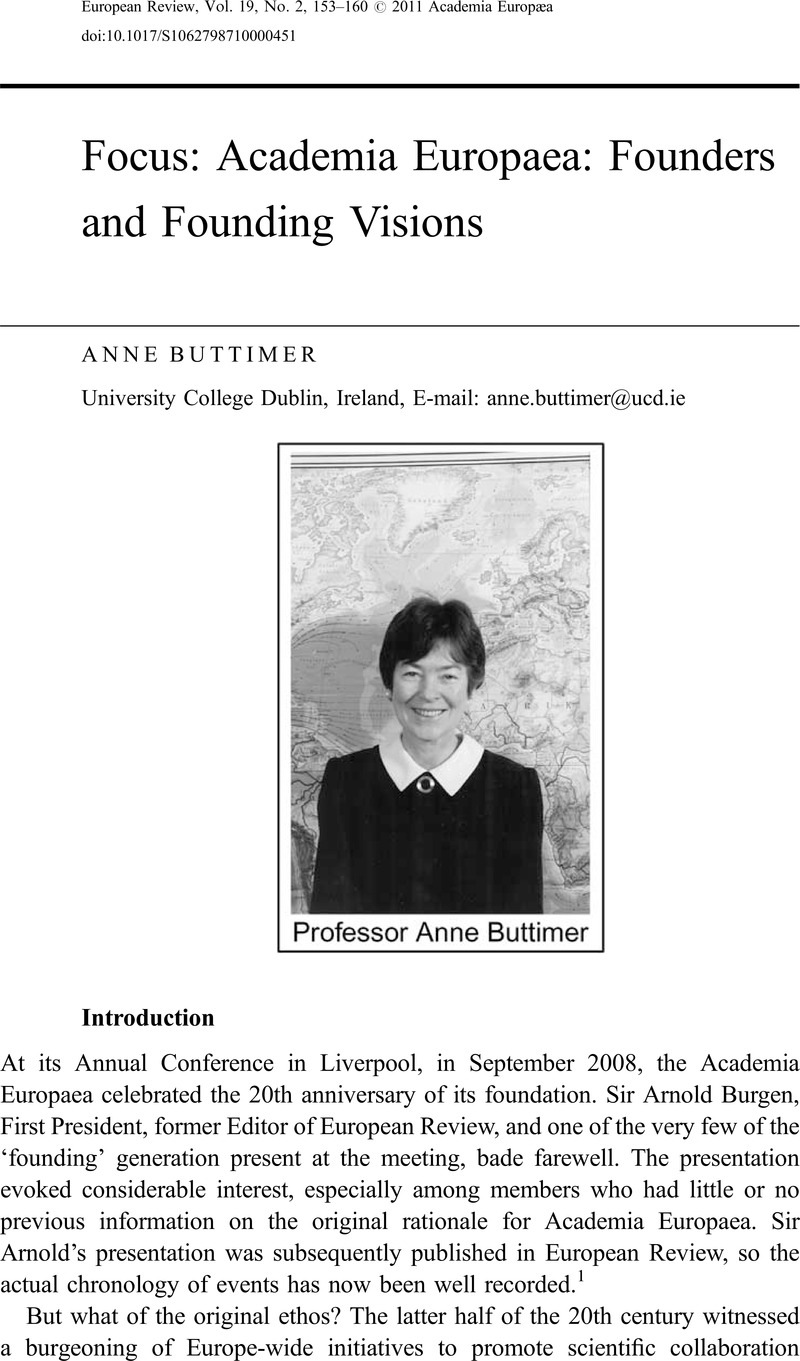No CrossRef data available.
Article contents
Focus: Academia Europaea: Founders and Founding Visions
Published online by Cambridge University Press: 14 April 2011
Abstract
An abstract is not available for this content so a preview has been provided. Please use the Get access link above for information on how to access this content.

- Type
- Focus: Academia Europaea: Founders and Founding Visions
- Information
- Copyright
- Copyright © Academia Europaea 2011
References
Notes and References
1. Sir Arnold's paper entitled ‘Academia Europaea: Origin and Early Days’ was published in European Review, Vol. 17, No. 3–4 (2009), pp. 469–475.Google Scholar
2. The rationale for this venture was based on the success of a previously completed ‘International Dialogue Project’ initiated by Anne Buttimer and Torsten Hägerstrand – incidentally one of the founder voices involved in planning for Academia Europaea – during the years 1977–1988 (A. Buttimer and T. Hägerstrand, 1980, Invitation to dialogue. Lund, Sweden: DIA Paper No. 1; A. Buttimer, 1986, Life experience as catalyst for cross disciplinary communication. Lund, Sweden: DIA Paper No. 3); and A. Buttimer, 1983, Creativity and Context. (Sweden: Lund Studies in Human Geography, Ser. B, No. 50). This involved video-recorded interviews with senior and retired scholars who shared insights from their own career experiences and group discussions among individuals from diverse disciplines around specific themes. These were shared with various audiences as catalysts for dialogue on issues of common concern and evokers of critical self-reflection on the viewer's own fields of practice. Subsequent analyses of texts have yielded valuable insight into potential common denominators of interest and bases for mutual understanding among scholars from various fields and cultural traditions (A. Buttimer, 1993, Geography and the Human Spirit (Baltimore, MD: The Johns Hopkins University Press)).Google Scholar
3. Variously referred to as ‘European Association of Scientists’, ‘European Unity in Science’ etc, it was eventually decided, on the suggestion of Eugen Seibold, that a Latin name should be used. Hence the designation of Academia Europaea.Google Scholar
4.Burgen, A. (2009) Academia Europaea: origin and early days. European Review, 17(3–4), pp. 469–475.CrossRefGoogle Scholar


